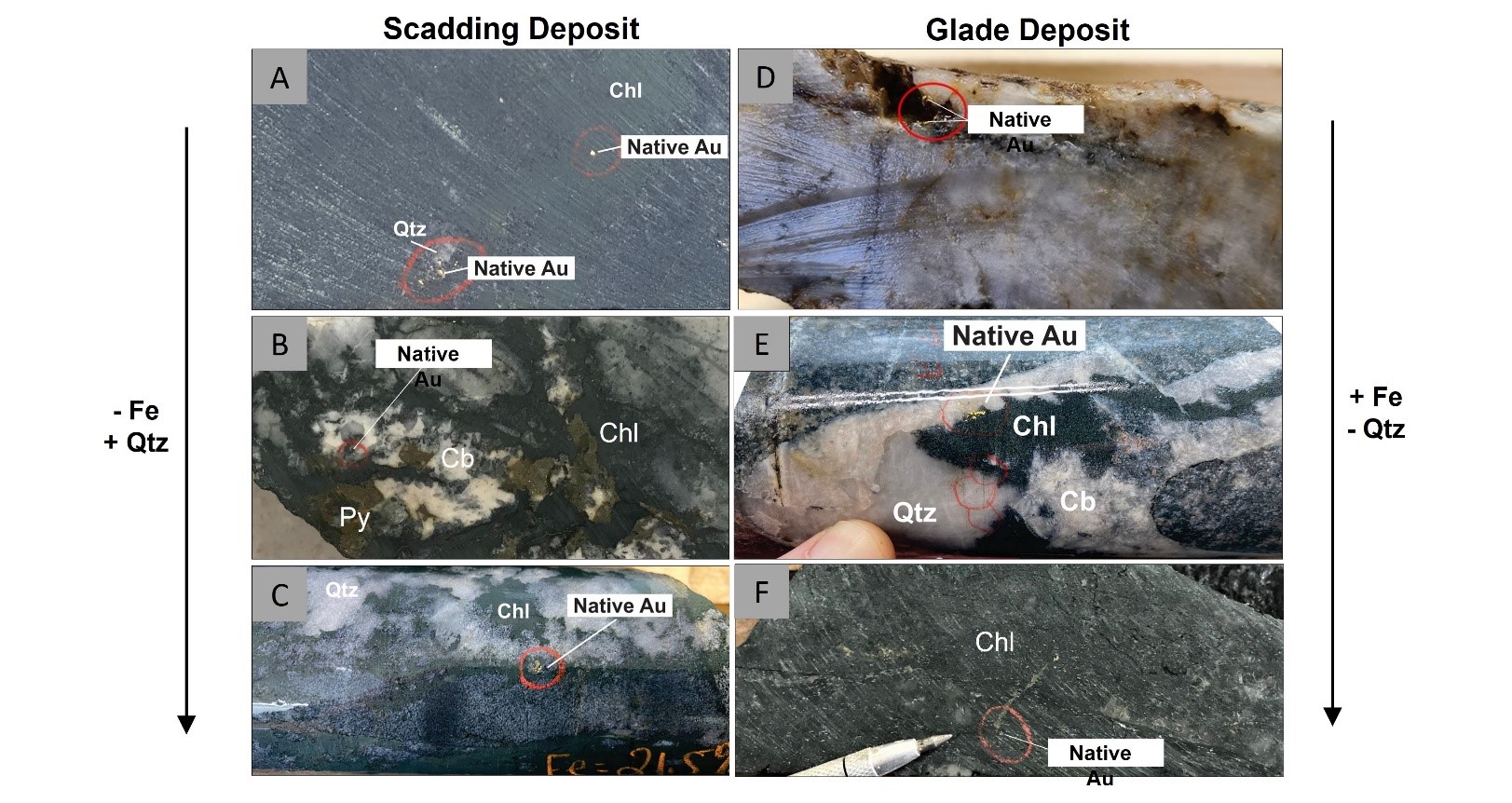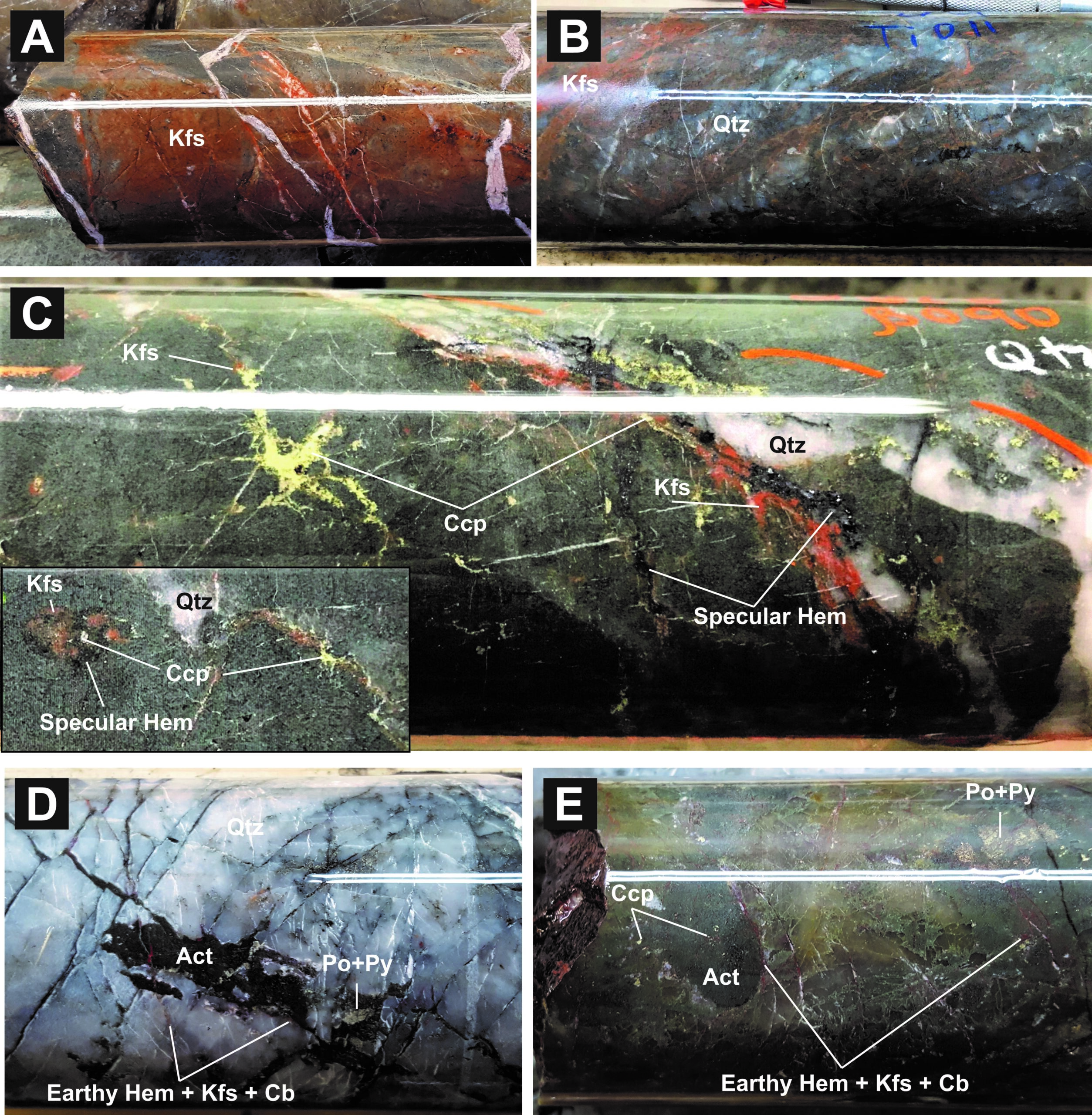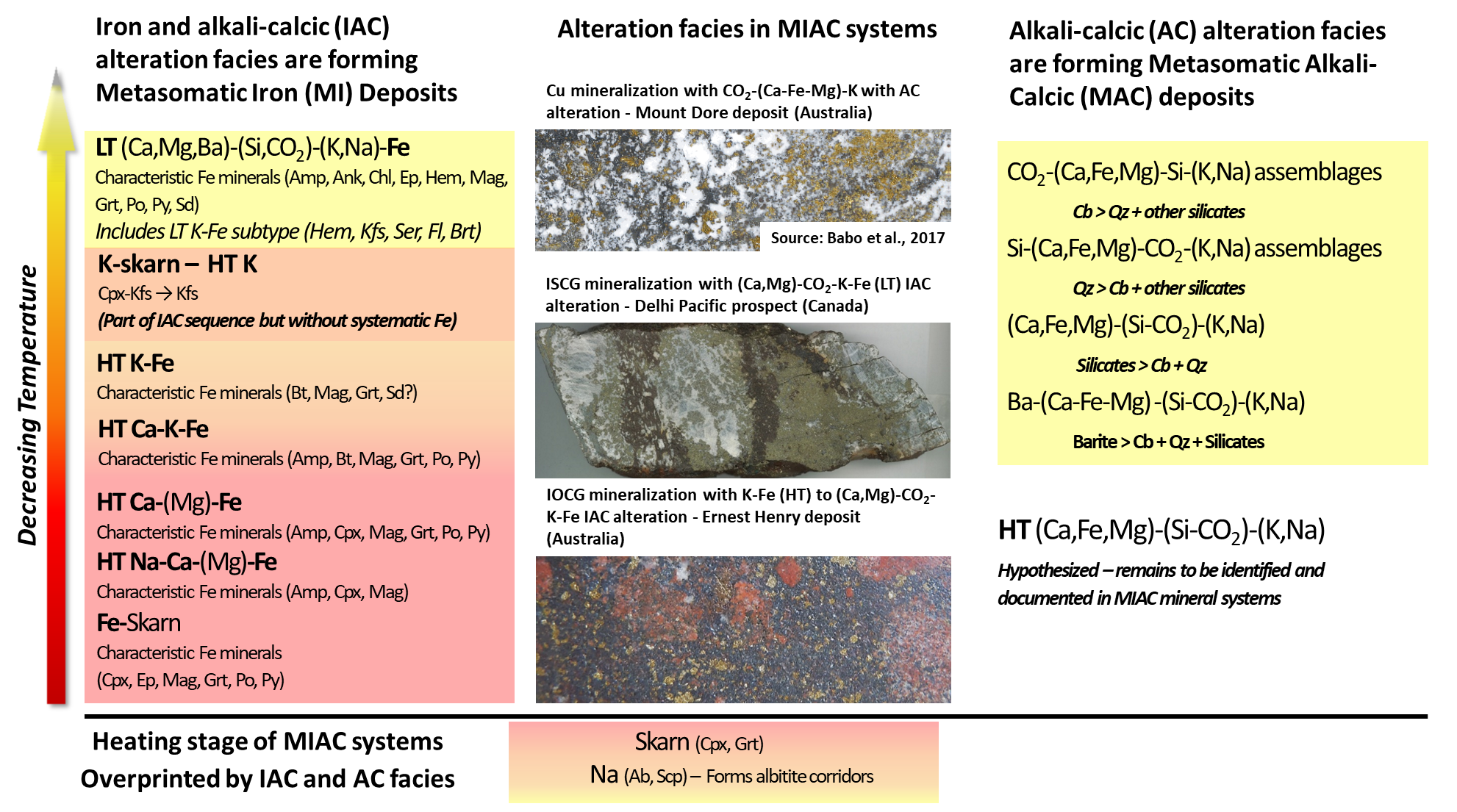Metasomatic iron and alkali-calcic systems are continental mineral systems typically located along deep lithosphere roots providing mantle to upper crust connection in continental orogeneses. A single MIAC system can extend over 50 km, they can be interconnected along hundreds of kilometers or form trains along metallogenic belts over a thousand of kilometers (Chen and Zhao, 2022). Their formation is generally contemporaneous with a magmatic flare that forms early volcanic centers and subvolcanic intrusions prior to (Great Bear magmatic zone, Olympic Cu-Au Province) or coeval with (Andes) episodes of voluminous magmatism that form batholiths or other large intrusive complexes (Montreuil et al., 2016a; Ootes et al., 2017; Wade et al., 2019; Del Real et al., 2021). The temporal and spatial evolution of large fluid plumes that mobilize Fe, alkalis, and other elements, and drive systematic suites of metasomatic reactions is the primary factor controlling the evolution of MIAC systems (Corriveau et al., 2022a-d). The nature and genesis of mineralizing fluids (i.e. liquids, vapors, melts, combination thereof, etc.) within these plumes is controversial, and definitively not unique but based on the common occurrence of coeval magmatism within MIAC systems some components of the fluids within the plume possibly arise either as a direct product of melt-fluid evolution and/or as a by-product of melt-host rock interactions at depth and as metasomatism proceeds regionally inducing extensive recharge and discharge of elements within the plume (e.g. Barton and Johnson, 1996; Hofstra et al., 2016; Tornos et al., 2017; Ovalle et al., 2018; Hou et al., 2018; Bain et al., 2020; Corriveau et al., 2022c).
In all cases, fluid egress away from its source is focused along local and regional discontinuities (e.g. fault and shear zones, some grounded into trans-lithospheric structures, and at the more local scale, contacts between rock units, contacts between different beds or laminations, axial zones of folds, etc.) where fluid-rock reactions give rise to metasomatism on various scales within a geological province (Williams et al., 2005; Austin and Blenkinsop, 2008; Kontak et al., 2008; Oliver et al., 2017; Corriveau et al., 2016; Hayward et al., 2016; Montreuil et al., 2016b). In the same way, mineral deposits are formed where favorable geological traps are present along these discontinuities and where the metasomatic system has evolved to alteration facies compatible with mineralization (Figure 3; Corriveau et al., 2016, 2022c; Hayward et al., 2016; Montreuil et al., 2016b; Blein et al., 2022).
Metasomatic iron and alkali-calcic systems evolve temporally and spatially following a relatively systematic suite of metasomatic reactions that involve iron (Fe), alkaline (Na, K), alkaline-earth elements (Ca, Mg, Ba), Si and CO2. Na metasomatism resulting in the formation of corridors of albitite occurs in the early sages of the evolution of a MIAC system and marks the initial ingress of fluids and heat carried by the fluid plume in the geological province (Oliver et al., 2004). Na metasomatism is the most spatially extensive manifestation of metasomatism in MIAC systems and occurs along geological discontinuities at all scales. The distribution of albitite corridors can provide valuable information on areas of enhanced crustal permeability in the geological province as was used by Farrow (2016) for the Ontario Geological Survey recommendations for exploration. In areas where carbonate units are present, the formation of skarn can be contemporaneous with sodic alteration (Corriveau et al., 2022b) and the association of skarn to systems developing IOCG deposits is common at regional to deposit scale (Ismail, 2015; Montreuil et al., 2016b; Fabris et al., 2018; Keyser et al., 2022).
Sodic metasomatism is then followed by the formation of diagnostic iron-rich to iron-poor alteration facies. For iron-rich alteration facies, Fe is typically combined with alkaline (Na, K), alkaline-earth elements (Ca, Mg, Ba), Si or CO2. Iron-rich alteration facies and their relative timing relationships are described in detail in Corriveau et al. (2022b,d) for systems in Canada and giant mining districts in Australia.

For iron-poor alteration facies, CO2, Si, alkaline and alkaline-earth elements are variably combined, but the association between specific facies and mineralization types remain to be established. At the Alwyn prospect on the SPJ Project, which is formed along the McLaren Fault (Figure 5), a gradual transition in the prevailing alteration facies occurs. At vertical depths exceeding 70 m, alteration associated with Ag, Au and Cu mineralization begins to transition from low-Fe facies to alteration facies with mineralogical signatures transitional between low-Fe facies and the LT K/Ca-(Ba,F,H+,Na)-CO2-Fe facies.

Across the SPJ Project area, variable alteration facies and mineralization assemblages are observed. One of the primary focuses of MacDonald Mines team has been establishing the relationship of these different styles of mineralization and the alteration facies associated with them. Within MIAC mineral systems, each alteration facies can be associated with specific mineralization types and metal assemblages that can be prognosticated based on the suite of major elements associated with Fe (Corriveau et al., 2022a,c).

